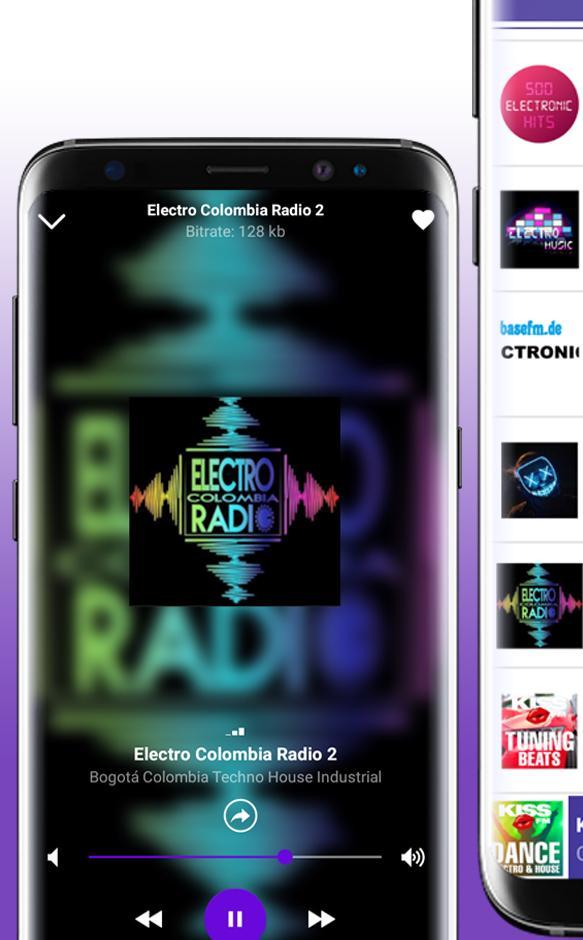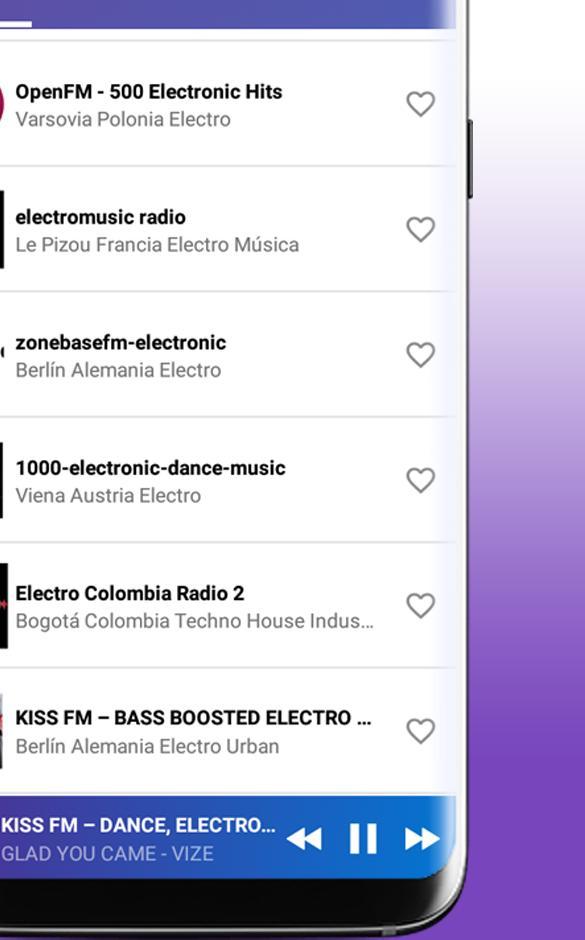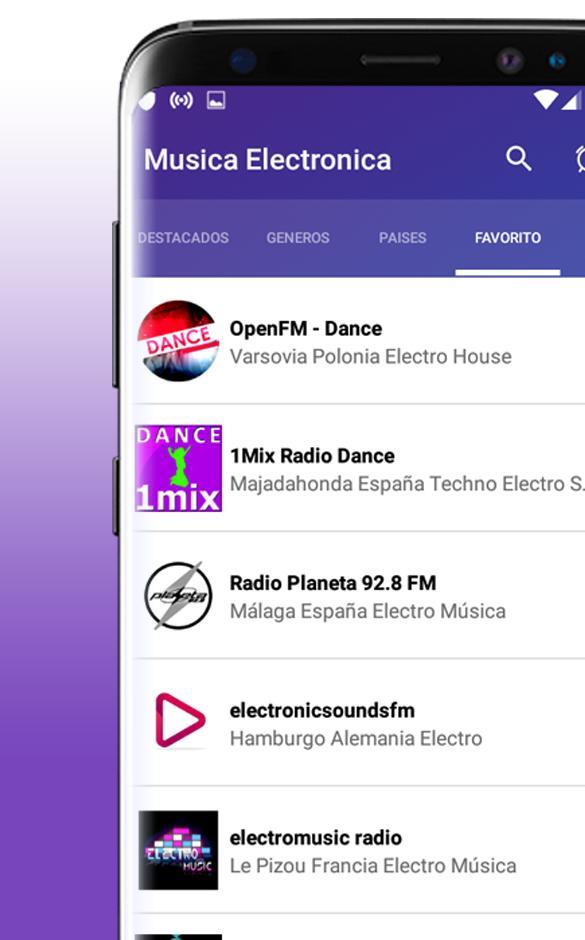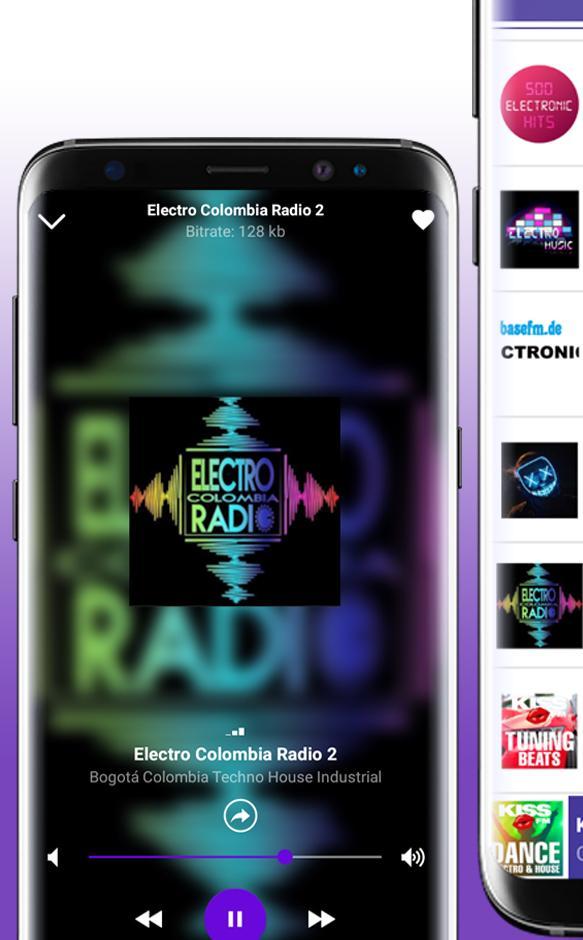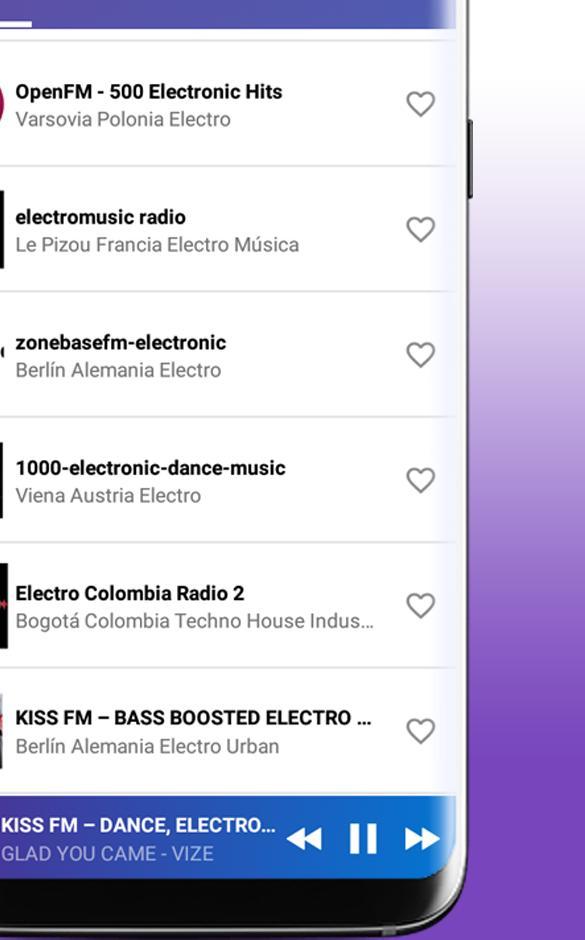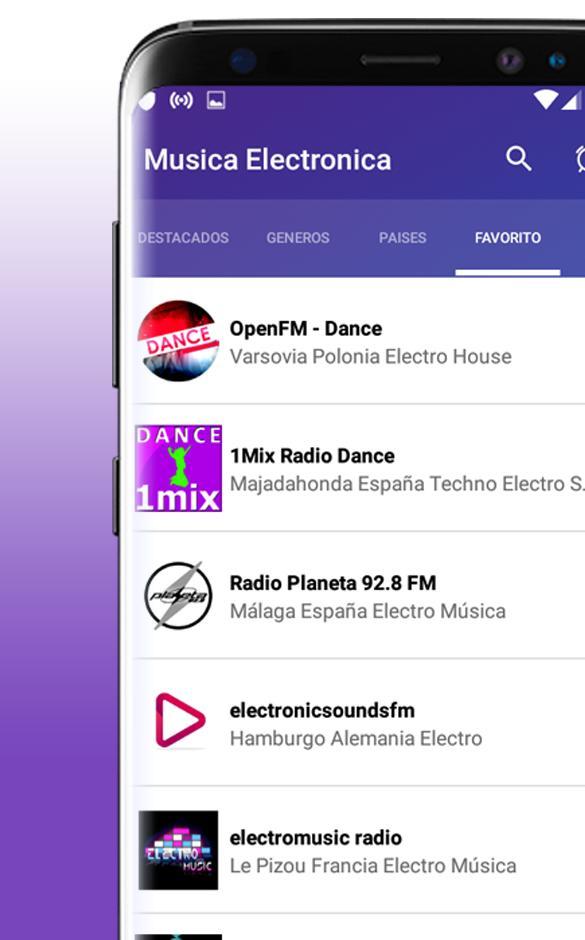Musica Electronica para Escuchar
Free Electronic Music for you to enjoy your electronic music 2020 for free from the different interpreters of the genre and the best radios from different countries in the world that transmit electro music radio.
Free Electronic Music, includes all the stations that transmit the musical genres of the moment
Free electronic music with a modern and elegant interface, you also have the option to select a super fast access to your favorite radios.
Listen to your Free Electronic Music.
Musica Electronica, a genre encompassing a vast and ever-evolving soundscape, thrives on electronic instruments and digitally produced sounds. Its origins can be traced back to the late 19th and early 20th centuries with the advent of electronic instruments like the Theremin and the Ondes Martenot. These early instruments, capable of producing otherworldly sounds, laid the groundwork for the future of electronic music.The development of tape recording technology in the mid-20th century marked a significant turning point. Composers like Pierre Schaeffer pioneered musique concrète, a form of electronic music created by manipulating recordings of natural and industrial sounds. This technique opened up new possibilities for sound design and composition, pushing the boundaries of traditional music.
The emergence of synthesizers in the 1960s revolutionized electronic music. Instruments like the Moog synthesizer provided musicians with the ability to create a wide range of electronic sounds, from soaring melodies to deep basslines. This period saw the rise of electronic music pioneers like Robert Moog, Wendy Carlos, and Morton Subotnick, who explored the expressive potential of synthesizers and helped popularize electronic music.
The 1970s witnessed the birth of several influential electronic music genres. Kraftwerk, a German band, pioneered electronic pop, blending electronic sounds with catchy melodies and robotic vocals. Brian Eno, a British musician and producer, developed ambient music, a genre characterized by atmospheric and minimalist soundscapes. Giorgio Moroder, an Italian composer and producer, helped shape the sound of disco with his use of synthesizers and electronic rhythms.
The 1980s saw the rise of electronic dance music (EDM), fueled by the development of new technologies like drum machines and samplers. Genres like house music, techno, and trance emerged in underground clubs and raves, captivating audiences with their infectious rhythms and hypnotic sounds. Pioneering DJs and producers like Frankie Knuckles, Juan Atkins, and Derrick May played a crucial role in shaping the sound of EDM.
The 1990s brought about further diversification within electronic music. Jungle and drum and bass emerged, characterized by their fast breakbeats and complex rhythms. Trip-hop, a genre blending hip-hop rhythms with downtempo electronic sounds, gained popularity. Electronica, a broader term encompassing various experimental electronic music styles, also emerged during this period.
The 2000s saw the continued evolution of EDM, with new subgenres like dubstep and electro house gaining prominence. The accessibility of music production software and the rise of online music sharing platforms democratized music creation, leading to a surge in independent electronic music producers.
The 2010s witnessed the global explosion of EDM, with festivals and concerts attracting massive audiences worldwide. The genre continued to evolve, incorporating influences from other musical styles like pop, hip-hop, and rock. Electronic music became increasingly mainstream, with artists like Daft Punk, Skrillex, and Calvin Harris achieving international fame.
Today, Musica Electronica continues to evolve and diversify, encompassing a vast array of subgenres and styles. From experimental ambient soundscapes to high-energy dance music, electronic music continues to push the boundaries of sonic exploration. The accessibility of technology and the interconnectedness of the global music community have fostered a vibrant and dynamic electronic music scene, ensuring its continued growth and evolution in the years to come. The future of Musica Electronica promises further innovation and exploration, as artists continue to experiment with new technologies and sounds, shaping the soundscape of the 21st century and beyond. The genre's enduring appeal lies in its ability to transcend traditional musical boundaries, offering a limitless canvas for sonic creativity and expression.
Musica Electronica para Escuchar
Free Electronic Music for you to enjoy your electronic music 2020 for free from the different interpreters of the genre and the best radios from different countries in the world that transmit electro music radio.
Free Electronic Music, includes all the stations that transmit the musical genres of the moment
Free electronic music with a modern and elegant interface, you also have the option to select a super fast access to your favorite radios.
Listen to your Free Electronic Music.
Musica Electronica, a genre encompassing a vast and ever-evolving soundscape, thrives on electronic instruments and digitally produced sounds. Its origins can be traced back to the late 19th and early 20th centuries with the advent of electronic instruments like the Theremin and the Ondes Martenot. These early instruments, capable of producing otherworldly sounds, laid the groundwork for the future of electronic music.The development of tape recording technology in the mid-20th century marked a significant turning point. Composers like Pierre Schaeffer pioneered musique concrète, a form of electronic music created by manipulating recordings of natural and industrial sounds. This technique opened up new possibilities for sound design and composition, pushing the boundaries of traditional music.
The emergence of synthesizers in the 1960s revolutionized electronic music. Instruments like the Moog synthesizer provided musicians with the ability to create a wide range of electronic sounds, from soaring melodies to deep basslines. This period saw the rise of electronic music pioneers like Robert Moog, Wendy Carlos, and Morton Subotnick, who explored the expressive potential of synthesizers and helped popularize electronic music.
The 1970s witnessed the birth of several influential electronic music genres. Kraftwerk, a German band, pioneered electronic pop, blending electronic sounds with catchy melodies and robotic vocals. Brian Eno, a British musician and producer, developed ambient music, a genre characterized by atmospheric and minimalist soundscapes. Giorgio Moroder, an Italian composer and producer, helped shape the sound of disco with his use of synthesizers and electronic rhythms.
The 1980s saw the rise of electronic dance music (EDM), fueled by the development of new technologies like drum machines and samplers. Genres like house music, techno, and trance emerged in underground clubs and raves, captivating audiences with their infectious rhythms and hypnotic sounds. Pioneering DJs and producers like Frankie Knuckles, Juan Atkins, and Derrick May played a crucial role in shaping the sound of EDM.
The 1990s brought about further diversification within electronic music. Jungle and drum and bass emerged, characterized by their fast breakbeats and complex rhythms. Trip-hop, a genre blending hip-hop rhythms with downtempo electronic sounds, gained popularity. Electronica, a broader term encompassing various experimental electronic music styles, also emerged during this period.
The 2000s saw the continued evolution of EDM, with new subgenres like dubstep and electro house gaining prominence. The accessibility of music production software and the rise of online music sharing platforms democratized music creation, leading to a surge in independent electronic music producers.
The 2010s witnessed the global explosion of EDM, with festivals and concerts attracting massive audiences worldwide. The genre continued to evolve, incorporating influences from other musical styles like pop, hip-hop, and rock. Electronic music became increasingly mainstream, with artists like Daft Punk, Skrillex, and Calvin Harris achieving international fame.
Today, Musica Electronica continues to evolve and diversify, encompassing a vast array of subgenres and styles. From experimental ambient soundscapes to high-energy dance music, electronic music continues to push the boundaries of sonic exploration. The accessibility of technology and the interconnectedness of the global music community have fostered a vibrant and dynamic electronic music scene, ensuring its continued growth and evolution in the years to come. The future of Musica Electronica promises further innovation and exploration, as artists continue to experiment with new technologies and sounds, shaping the soundscape of the 21st century and beyond. The genre's enduring appeal lies in its ability to transcend traditional musical boundaries, offering a limitless canvas for sonic creativity and expression.



